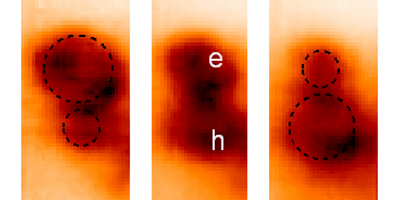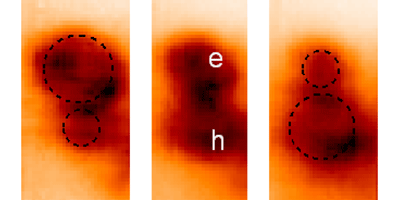Magnetoresistance That Doesn’t Stop
The change in a material’s resistance in an applied magnetic field—magnetoresistance—can be minute or colossal. But in all its forms, the effect, which is used in hard-disk drives and magnetic-field sensors, tapers off at a sufficiently high field. Tungsten ditelluride ( ) is the first known exception: at 0.53 kelvin, its resistance rises rapidly with increasing field, changing by 13 million percent at 60 tesla with no sign of leveling off (M. N. Ali et al., Nature 514, 205 (2014)). New photoemission experiments suggest that this effect is the result of an unusually perfect balance between electrons and holes—a finding that could suggest a route to engineer other materials with large magnetoresistance.
has only a small number of conducting electrons and holes, and in similar concentrations. It is also “clean,” meaning the electrons and holes can travel a long distance before scattering. Metal theory predicts that materials with these properties have a resistance that increases with the square of the magnetic field. But in real materials, like bismuth and graphite, this rise stops at high fields because the electron and hole concentrations aren’t exactly the same. Ivo Pletikosić, now at Princeton University in New Jersey, and his colleagues at Brookhaven National Laboratory, New York, studied ’s electronic structure with high-resolution photoemission and showed that electron-hole compensation is close to perfect. They also found that certain electron states start to dominate over holes at higher temperatures, perhaps explaining why magnetoresistance in turns off above kelvin. With a detailed mapping of ’s electronic structure in hand, researchers have a reference point for understanding how doping the material could further improve its magnetoresistive properties.
This research is published in Physical Review Letters.
–Jessica Thomas





